Flowers have been used for centuries as natural symbols of emotions, hopes, and dreams. Their colorful petals and pleasant fragrances are known to lift spirits and provide comfort. Throughout history, certain flowers have also come to represent healing. Sending or gifting flowers that symbolize recovery can be a thoughtful way to brighten someone’s day when they are sick or injured. Here are 9 of the top flowers that are known to signify healing, health, and wellness.
Lotus Flower
The lotus flower has been a powerful and significant symbol in many cultures and faiths throughout history. This majestic flower grows in muddy and murky waters, but against all odds, it rises up to bloom beautifully and pure. This unique characteristic of the lotus has led to its association with various meanings, including spiritual enlightenment and rebirth. However, one of the most notable symbolic meanings of the lotus is its role as a symbol of healing.
In many cultures, the lotus flower is seen as a representation of purity. Its ability to grow and thrive in dirty and murky waters without being affected by its surroundings is often interpreted as a symbol of inner strength and resilience. The lotus is also associated with divinity, as it is believed to be a sacred flower that holds great spiritual significance. Its delicate yet strong nature has led to its association with divine qualities such as grace, beauty, and wisdom.
Furthermore, the lotus is also linked to fertility and prosperity. In ancient Egypt, the blue lotus was associated with fertility and rebirth, while in Hinduism, the pink lotus is seen as a symbol of fertility and abundance. The lotus’ connection to fertility and prosperity stems from its ability to produce thousands of seeds, representing abundance and growth.
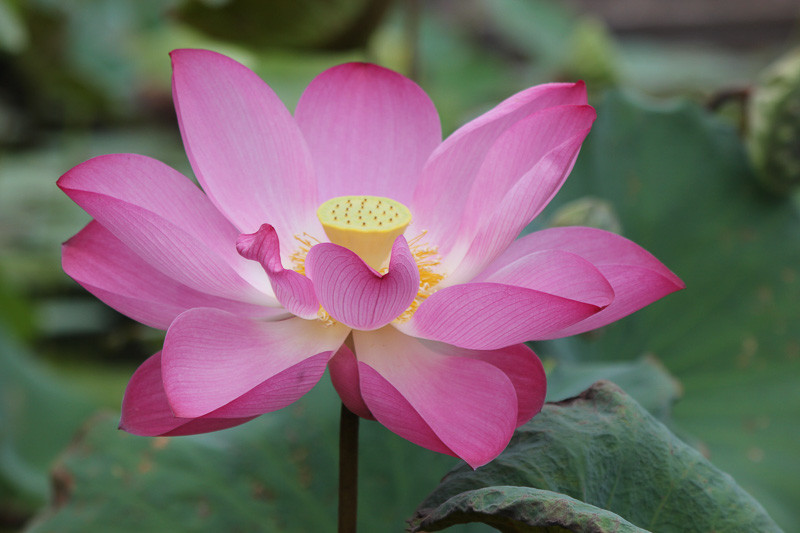
Aside from its symbolic meanings, there is also a belief that the lotus has healing properties. The white and pink lotus blossoms, in particular, are thought to possess powerful healing abilities. These flowers are believed to have a calming effect on the mind and can promote feelings of inner peace and tranquility. Additionally, the lotus is also associated with the chakras, specifically the heart and crown chakras, which are connected to love, compassion, and spiritual awakening. It is believed that meditating or surrounding oneself with lotus flowers can help balance these energy centers, leading to physical and emotional healing.
Moreover, in Chinese medicine, the lotus root is known for its healing properties and is often used to treat various ailments. It is believed that consuming lotus root can help improve digestion, strengthen the immune system, and even alleviate symptoms of respiratory illnesses.
The lotus flower holds great symbolic meaning in several cultures and faiths. Its association with purity, divinity, fertility, prosperity, and beauty has made it a significant symbol of healing. Whether it be through its calming and balancing effects on the mind and body or its use in traditional medicine, the lotus is seen as a powerful source of spiritual enrichment and healing. So, next time you see a lotus flower blooming, remember its message of hope, resilience, and transformation, and let it inspire you towards a journey of healing and enlightenment.
Lavender
Lavender is a beautiful and versatile flower that has been used for centuries for its healing properties. With its sweet floral scent and soothing purple hues, it is no wonder that this fragrant herb is often associated with relaxation and pampering. Whether in the form of fresh blooms or essential oil, lavender has a variety of healing benefits that make it a popular choice for promoting overall well-being.
One of the key healing properties of lavender is its ability to promote calmness and serenity. The scent of lavender has been shown to have a calming effect on the nervous system, reducing feelings of stress and anxiety. This can be especially beneficial for those who struggle with anxiety disorders or have trouble winding down after a long day.
In addition to promoting calmness, lavender also aids in sleep. Studies have shown that the scent of lavender can improve the quality of sleep, making it a popular choice for those who suffer from insomnia or other sleep disorders. By inhaling the soothing aroma, lavender can help relax the mind and body, allowing for a more restful and rejuvenating sleep.
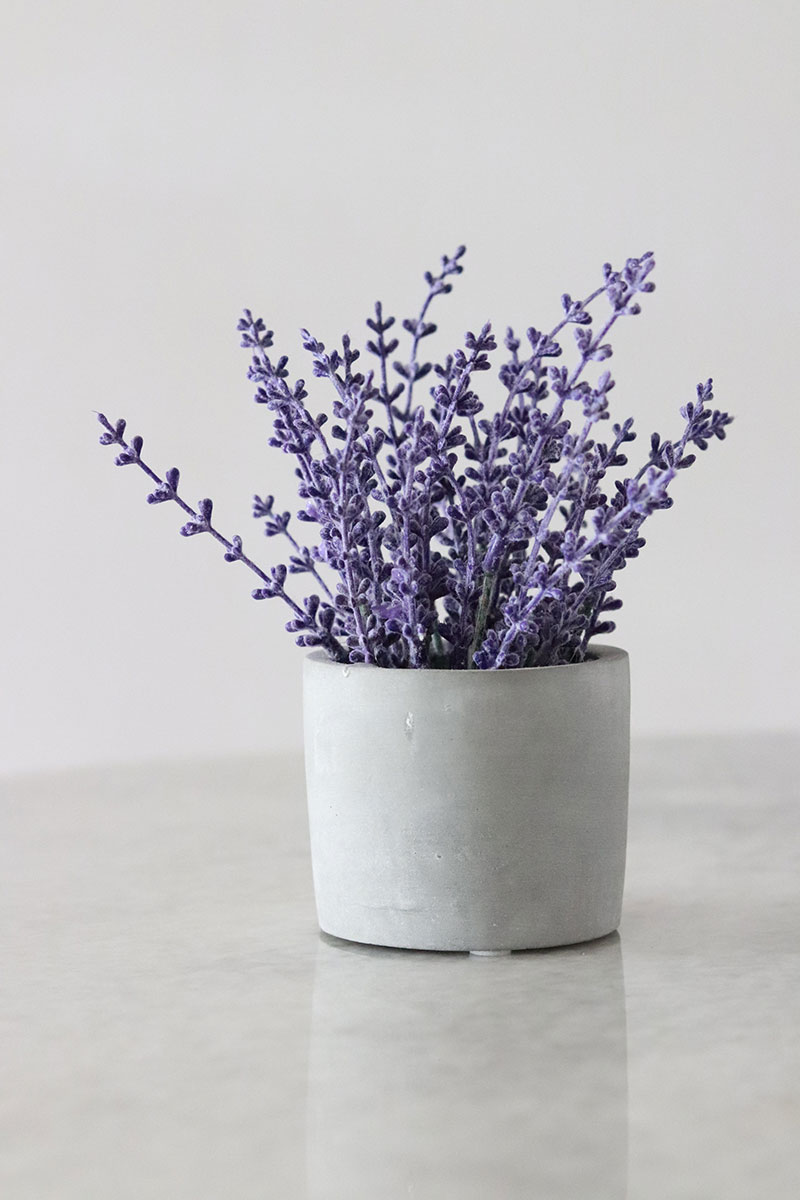
Easing anxiety and depression is another important healing property associated with lavender. The scent of lavender has been shown to have a positive impact on mood and can help reduce symptoms of depression. Its calming effects can also help alleviate feelings of stress and tension, making it a natural and holistic approach to managing these conditions.
Lavender is also known for its pain-relieving properties. The essential oil of lavender contains compounds that have anti-inflammatory and analgesic properties, making it effective in reducing pain and discomfort. It is commonly used to alleviate headaches and migraines, as well as muscle aches and pains.
Aside from its mental and emotional benefits, lavender also has physical healing properties. It has been used for centuries to treat minor cuts, burns, and bruises due to its antiseptic and anti-inflammatory properties. Applying lavender essential oil or using a lavender-infused salve can help speed up the healing process and reduce the risk of infection.
Lavender is a powerful flower that offers a range of healing benefits for both the mind and body. Its calming and soothing properties make it an excellent choice for promoting relaxation, aiding sleep, easing anxiety and depression, and relieving pain. Whether you choose to enjoy the fragrance of fresh lavender blooms or use essential oil for its therapeutic effects, incorporating this beautiful flower into your self-care routine can have a significant impact on your overall well-being.
Chrysanthemum
Flowers have been used for centuries to convey emotions, thoughts, and messages. Amongst these floral beauties, some hold special meanings that are associated with healing and positivity. One such flower is the chrysanthemum, which has long been known for its vibrant colors and positive symbolism. In this writing, we will explore the different meanings of chrysanthemums in relation to healing.
Firstly, chrysanthemums represent longevity. The name chrysanthemum comes from the Greek words “chrysos” meaning gold and “anthemon” meaning flower. It is believed that these flowers were initially golden in color, hence the name. In Chinese culture, chrysanthemums are a symbol of long life and immortality. They are often given on birthdays or as a gift to elderly people as a wish for a long and healthy life.
In addition to longevity, chrysanthemums also signify rejuvenation. This is because they bloom during the fall season when most other flowers wilt and die. Their ability to thrive during this time of year is seen as a sign of strength and resilience. Chrysanthemums inspire us to let go of the past and embrace new beginnings. They remind us that even after a difficult period, there is always hope for renewal and growth.

Another meaning associated with chrysanthemums is renewal. These flowers are also known to have medicinal properties that can help heal the body. In traditional Chinese medicine, chrysanthemum tea is often used to treat various ailments such as headaches, fever, and inflammation. The tea is believed to have a cooling effect on the body and helps to detoxify it. In Japan, chrysanthemums are considered the “flower of autumn” and are used in many traditional medicines to promote overall health and wellness.
Moreover, chrysanthemums are a symbol of positivity. Their bright and cheerful colors bring joy and happiness to any space. The vibrant hues of chrysanthemums are said to have a positive impact on one’s mood and can help alleviate feelings of sadness and anxiety. Their presence in a room can create a sense of calmness and tranquility, making them ideal for hospitals and wellness centers.
Lastly, chrysanthemums represent cheerfulness. These flowers are often associated with a joyful and optimistic outlook on life. They remind us to appreciate the beauty around us and to find joy in the little things. Chrysanthemums are also believed to bring good luck and prosperity. In Japan, they are considered a symbol of the Imperial family and are used in the Emperor’s crest.
Chrysanthemums hold powerful meanings that promote healing and positivity. These beautiful flowers represent longevity, rejuvenation, renewal, positivity, and cheerfulness. They are believed to possess natural healing properties that can boost overall wellness and lift one’s mood and spirits. Whether given as a gift or used for decoration, chrysanthemums are a perfect way to send wishes of good health, happiness, and prosperity.
Carnation
Flowers have been a meaningful and symbolic part of human culture for centuries. They represent emotions, feelings, and even different aspects of life. One type of flower that holds significant meaning is the carnation. This beautiful flower comes in various shades and each color has its own symbolic representation. While most carnations are known to represent love and affection, there is one specific type that holds special meaning for healing – the striped carnation.
The striped carnation is a popular flower with beautiful patterns of stripes in different colors such as red, pink, and white. These vibrant blooms not only add a pop of color to any bouquet or garden, but they also hold a powerful message of hope, positivity, recovery, good health, and strength. All these elements make it a perfect choice for gifting to someone who needs healing and support.
One of the main reasons why striped carnations are associated with healing is their unique appearance. The combination of different colors and patterns on the petals represents the ups and downs that come with the healing process. It reminds us that healing is not always a smooth journey, but with perseverance and strength, we can overcome any obstacles and emerge stronger than before.
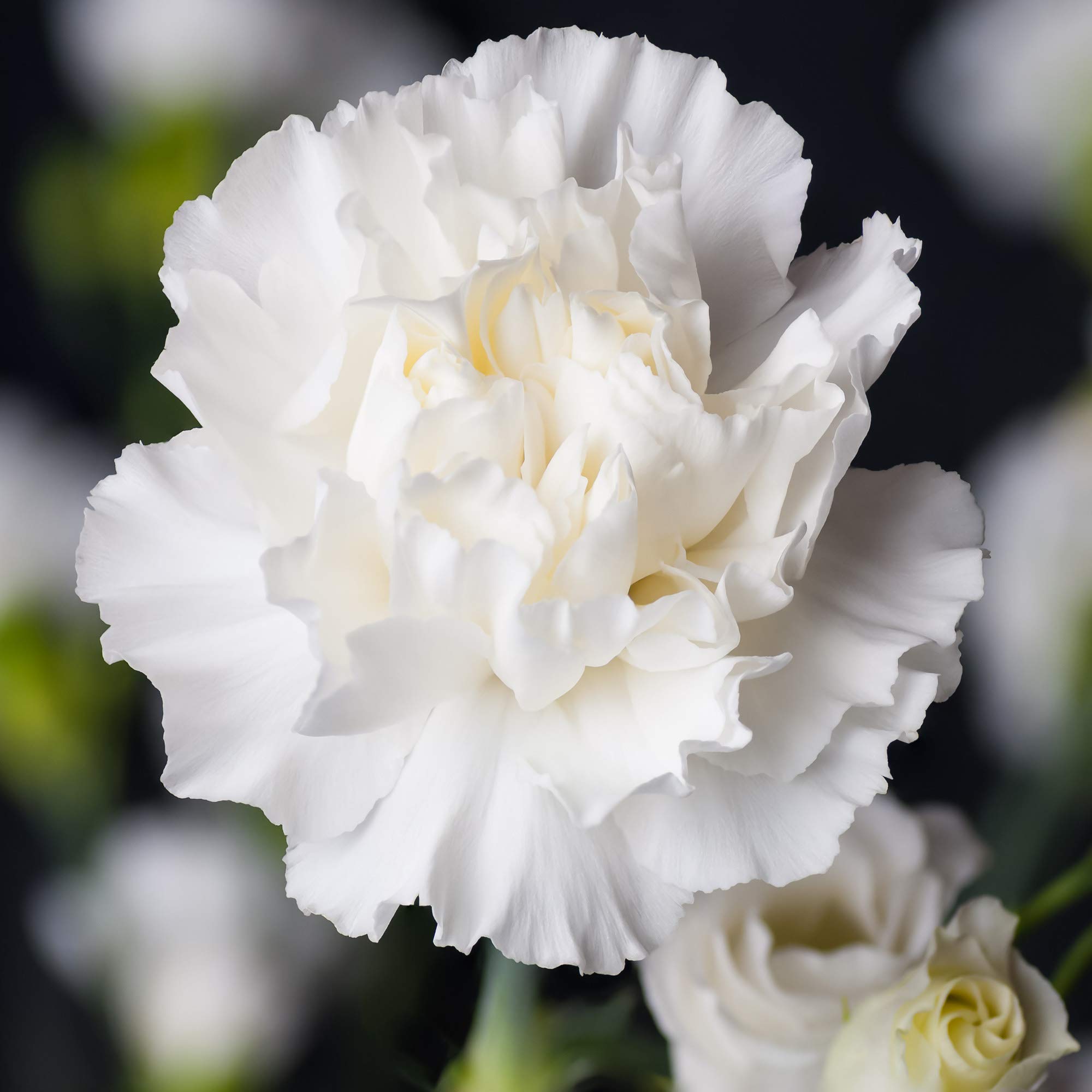
Additionally, the striped carnation is believed to possess healing properties that can help in speeding up the recovery process. According to traditional beliefs, the colors and patterns on the petals of the striped carnation have a calming effect on the mind and body. This, in turn, promotes relaxation, reduces stress and anxiety, and helps in boosting the immune system. This is why placing striped carnations in a vase by a loved one’s bedside can have a positive impact on their overall well-being.
Furthermore, the striped carnation is also associated with hope and positivity. The vibrant colors and patterns on the petals symbolize new beginnings, growth, and progress. This makes it a perfect flower to send to someone who is going through a difficult time and needs a reminder to stay hopeful and optimistic. Placing striped carnations in a room can create a positive atmosphere that encourages the person to focus on their recovery and look forward to a brighter future.
The striped carnation also represents good health and strength. As mentioned earlier, these flowers have been traditionally believed to possess healing properties. The different colors on the petals are also associated with different aspects of health. For instance, red is often associated with energy and vitality, pink with love and compassion, and white with purity and clarity. This makes the striped carnation an excellent gift for someone who is recovering from an illness or injury and needs physical and emotional strength.
The striped carnation is not just a beautiful flower but also a powerful symbol of healing. Its vibrant colors, unique patterns, and deep meanings make it a perfect choice for gifting to someone who needs support and encouragement during their healing process. Whether it is placed by a loved one’s bedside or sent as a gift, the striped carnation carries a strong message of hope, positivity, recovery, good health, and strength, making it a truly special and meaningful flower.
Iris
Flowers have long been used as symbols for various emotions and meanings. They can convey love, gratitude, sympathy, and even healing. Among the many flowers that hold special meanings, the regal iris stands out as a powerful symbol of healing.
The iris is a beautiful flower that comes in a variety of colors, but it is the purple iris that holds a specific meaning when it comes to healing. In fact, the purple iris has been associated with healing for centuries, dating back to ancient Greek mythology. According to legend, the goddess Iris traveled between the heavens and earth, acting as a messenger between the gods and humanity. She was often depicted with wings and carrying a pitcher of water, which represented the power of healing.
In modern times, the symbolism of the purple iris has evolved, but its association with healing remains strong. The purple color of the iris is often associated with royalty, wisdom, and spirituality. This makes it a fitting symbol for the strength and resilience needed for healing.
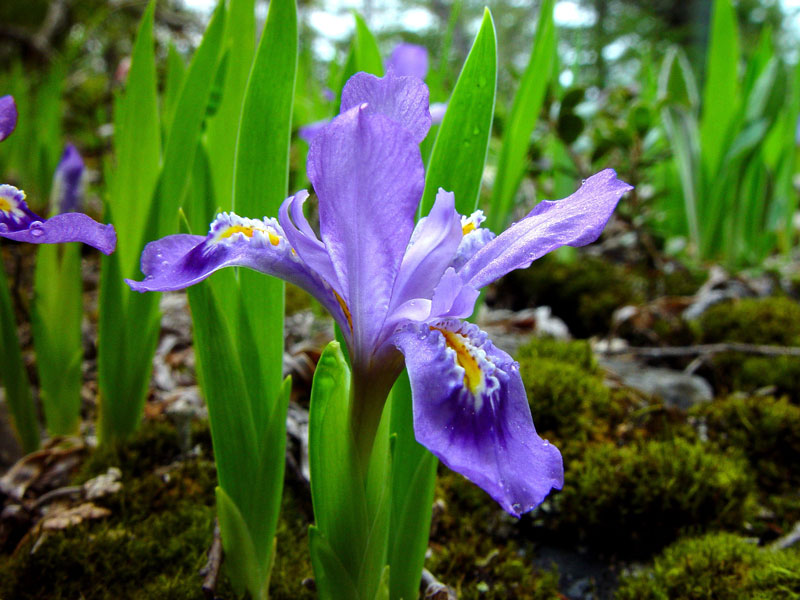
One of the main meanings associated with the purple iris is wisdom. This is derived from its Greek origins, as the word “iris” also means “rainbow” and is associated with knowledge and communication. In terms of healing, wisdom is an important quality to have as it allows us to make informed decisions about our health and well-being. It also encourages us to seek out guidance and information to aid in our healing journey.
Another meaning associated with the purple iris is cherished friendship. This is because the iris blooms in spring, a time of new beginnings, and is believed to bring good luck and happiness to friends. In terms of healing, having strong and supportive friendships is crucial. Friends provide emotional support, lend a listening ear, and offer practical help during times of illness or recovery.
Hope is another powerful symbol associated with the purple iris. The flower’s vibrant color and delicate petals are seen as a reminder that there is always hope for a better tomorrow. This is especially important during times of illness, when it can be easy to feel hopeless and discouraged. The purple iris serves as a reminder to keep moving forward and to believe in the possibility of healing.
Valour, or courage, is also associated with the purple iris. The flower’s tall and sturdy stems symbolize strength and resilience, reminding us that we are capable of overcoming challenges and adversity. This quality is essential for those on a healing journey, as it takes courage to face and overcome illness.
Lastly, the purple iris is associated with faith. Faith can mean different things to different people, but it generally represents a belief in something greater than oneself. For some, this may be a religious faith, while for others, it may be a belief in their own inner strength and resilience. Regardless of its form, having faith is crucial for healing, as it provides comfort, strength, and a sense of purpose during difficult times.
The regal purple iris holds great significance when it comes to healing. Its symbolism of wisdom, cherished friendship, hope, valour, and faith make it an ideal gift for someone who needs encouragement and support during their healing journey. So the next time you want to show someone your love and support during their recovery, consider giving them a bouquet of purple irises.
Gladiolus
The gladiolus is a beautiful and eye-catching flower that has been used for centuries to convey different meanings and emotions. Its tall, elegant spikes make a bold statement and have earned it various nicknames like “sword lily” and “gladiator flower”. While the gladiolus is typically known for representing strength and integrity, it also holds a special meaning for healing.
One of the most well-known symbols associated with the gladiolus is its representation of strength. This is due to its tall and straight stem, which can reach up to 4 feet in height, giving it a powerful and commanding presence. Just like the gladiators of ancient Rome who fought fiercely in battle, the gladiolus stands tall and determined, symbolizing strength and courage in times of adversity.
In addition to strength, the gladiolus is also often associated with integrity. This is mainly due to its connection with the ancient Roman gladiators who were admired for their bravery, honor, and integrity. The gladiolus, with its bold and upright appearance, embodies these traits and serves as a reminder for us to always stay true to our values and principles.
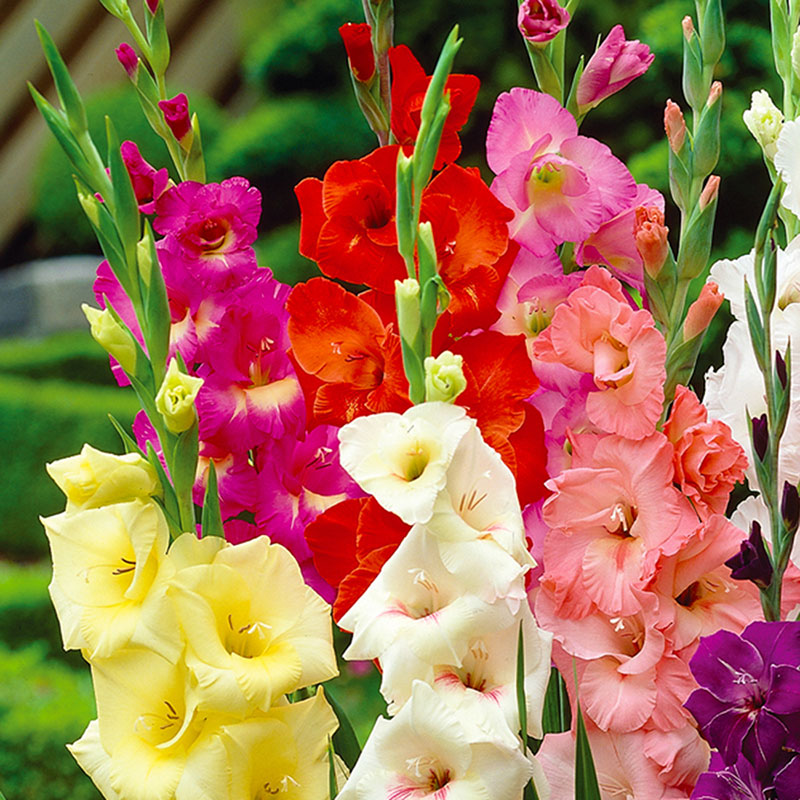
But perhaps one of the most interesting meanings associated with the gladiolus is its representation of love and infatuation. This may come as a surprise considering its more commonly known meanings, but the red variety of gladiolus is actually often given to express feelings of infatuation and passion towards someone. In fact, in the Victorian era, sending someone a bouquet of red gladiolus was considered a discreet way of declaring your love for them.
On the other hand, the white gladiolus represents sincerity and honesty. This is because of its pure and pristine white color, which symbolizes innocence and truth. Giving someone a bouquet of white gladiolus can be a heartfelt way of expressing your genuine and sincere intentions towards them.
But out of all the meanings associated with gladiolus, the one that stands out the most is its representation of healing. The pink gladiolus, in particular, is often referred to as the “flower of grace” and is believed to possess healing powers. This association can be traced back to ancient Roman times when gladiators would rub their wounds with gladiolus petals, believing it would aid in their healing process.
Even today, the pink gladiolus is given as a symbol of hope and encouragement to someone who is going through health issues. Its vibrant and cheerful pink blooms are sure to bring a smile to anyone’s face and brighten up their room. The gladiolus’ connection to healing makes it a perfect gift for those in need of physical or emotional recovery.
The gladiolus is a versatile flower with a rich history and a wide range of meanings. From strength and integrity to love and healing, this beautiful flower has something to represent every emotion. So next time you want to convey your feelings or show your support to someone, consider giving them a bouquet of gladiolus and let the flowers do the talking.
Daisy
Flowers have long been used as symbols of various emotions and qualities. From love to gratitude, each flower carries a different meaning and can communicate a range of emotions. One such flower is the daisy, which is often associated with feelings of innocence, loyalty, purity, beauty, and new beginnings. However, its symbolism goes beyond just these qualities, as certain types of daisies are also known for their healing properties.
One type of daisy that is particularly associated with healing is the cheery daisy. Its bright yellow center and delicate white petals evoke feelings of joy and optimism, making it a popular choice for bouquets and arrangements. But beyond its cheerful appearance, this flower holds special significance when it comes to healing.
In general, daisies are believed to have medicinal properties and have been used for centuries in traditional medicine. In fact, the scientific name for daisy, Bellis perennis, translates to “eternal beauty,” highlighting its enduring reputation as a healing plant. However, the cheery daisy, in particular, has a strong association with healing due to its connection to the Greek goddess of healing, Eir. This goddess was often depicted wearing a crown of daisies, and it is believed that she used daisies to heal and soothe those who were ill or injured.
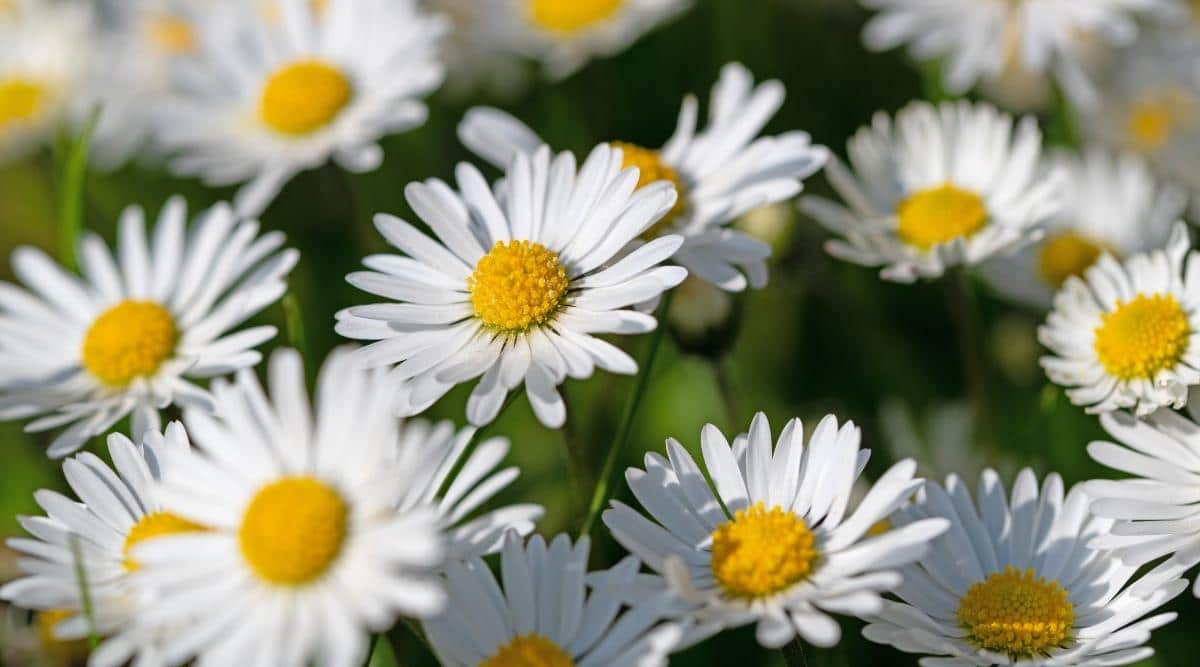
The cheery daisy’s links to healing are further reinforced by its association with the innocent and pure. These qualities are also often associated with healing, as they represent a return to a state of wholeness and well-being. By symbolizing innocence, the cheery daisy speaks to our innate need for comfort and reassurance in times of distress.
Furthermore, the daisy’s association with loyal love adds another layer of meaning to its healing symbolism. When someone is going through a difficult time, they may feel vulnerable, scared, and alone. In such situations, receiving a bouquet of cheery daisies from a loved one can provide immense comfort and support. The flower’s representation of loyal love reminds us that we are not alone and that there are people who care for us and want to help us heal.
Moreover, the white daisy, in particular, is believed to possess strong healing properties. This type of daisy is often associated with purity and is thought to relieve pain and promote overall wellness. Its pure white color also symbolizes peace and tranquility, making it an ideal flower to give someone who may need a little extra healing.
The cheery daisy is a flower that holds deep meanings and symbols related to healing. Through its association with innocence, loyal love, purity, beauty, and new beginnings, it speaks to our innate need for comfort and reassurance during difficult times. Its bright and cheerful appearance, combined with its links to healing, make it a perfect choice to uplift someone’s spirits and bring them a sense of peace and well-being. So, the next time you want to send a message of hope and healing, consider including a bouquet of cheery daisies.
Rose
Flowers have long been symbols of various emotions and meanings, with roses being one of the most popular and well-known flowers. While many people associate roses with love and passion, they also hold a significant meaning when it comes to healing. The color of a rose can greatly impact its significance, and this is especially true for pink and white roses when it comes to promoting healing.
Pink roses are often associated with admiration, gratitude, and joy. However, they also hold a special meaning when it comes to healing. The soft, delicate hue of pink is often used in calming and soothing environments, making it the perfect color for promoting healing. Pink roses also have a gentle and nurturing energy, making them a fitting gift for someone who is in need of emotional or physical healing.
The color pink has been found to have a positive effect on our minds and bodies. It is known to reduce stress, anxiety, and feelings of anger. It is also believed to promote feelings of love, compassion, and empathy. These qualities make pink roses an ideal choice for someone who is going through a difficult time and needs to feel comforted and supported.
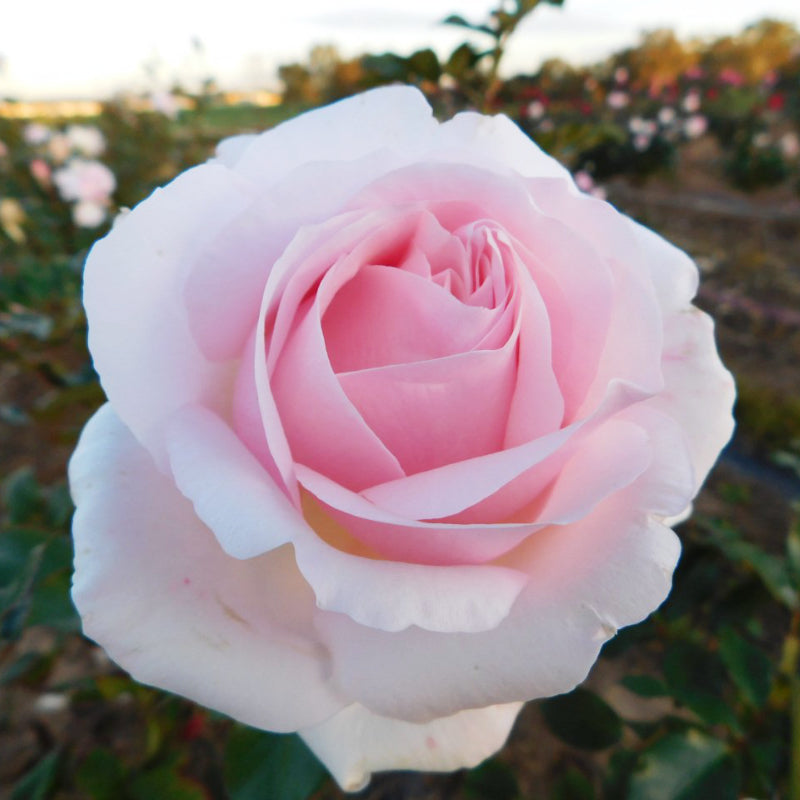
White roses, on the other hand, symbolize purity, innocence, and new beginnings. They are often used in weddings and other ceremonial occasions to represent a clean slate and fresh start. In terms of healing, white roses are believed to have cleansing and purifying properties. They are also known to bring balance and harmony to the mind, body, and spirit.
The combination of pink and white roses creates a powerful symbol of healing and renewal. By combining the calming and nurturing energy of pink with the purifying and balancing energy of white, these roses send a message of hope, comfort, and rejuvenation.
In addition to their colors, roses also hold a powerful fragrance that has been found to have therapeutic benefits. The scent of roses is often used in aromatherapy to promote relaxation and reduce stress and anxiety. It is also known to boost mood and improve overall well-being. Therefore, giving someone pink and white roses not only provides a visual reminder of healing but also a soothing scent that can help with the healing process.
Pink and white roses hold a significant meaning when it comes to promoting healing. Their colors and fragrance create a sense of calmness, comfort, and rejuvenation which can greatly benefit someone who is in need of healing. So next time you want to show your support for someone who is going through a difficult time, consider giving them a bouquet of pink and white roses to remind them of your love, appreciation, and desire for their well-being.
Hydrangea
Flowers have long been used to convey meanings and messages, with each type of flower carrying a different symbolism. One of the most meaningful and powerful ways flowers are used is to represent healing and positivity. Among the many types of flowers that symbolize healing, hydrangeas stand out for their lush clustered blossoms and their unique symbolism.
Hydrangeas have been cultivated and admired for centuries for their beautiful blooms in a variety of colors. They are native to Asia and North and South America, and were introduced to Europe in the 18th century. Their name comes from the Greek words “hydros” which means water, and “angeion” which means vessel, referring to the shape of their seed capsules. With their stunning appearance and rich history, it’s no wonder hydrangeas have become a popular choice for weddings, gardens, and flower arrangements.
But beyond their aesthetic appeal, hydrangeas also hold deep symbolic meanings. In general, hydrangeas symbolize gratitude, grace, beauty, calmness, devotion, and understanding. These qualities make them a perfect choice for various occasions and relationships, from expressing thankfulness to showing appreciation and admiration.
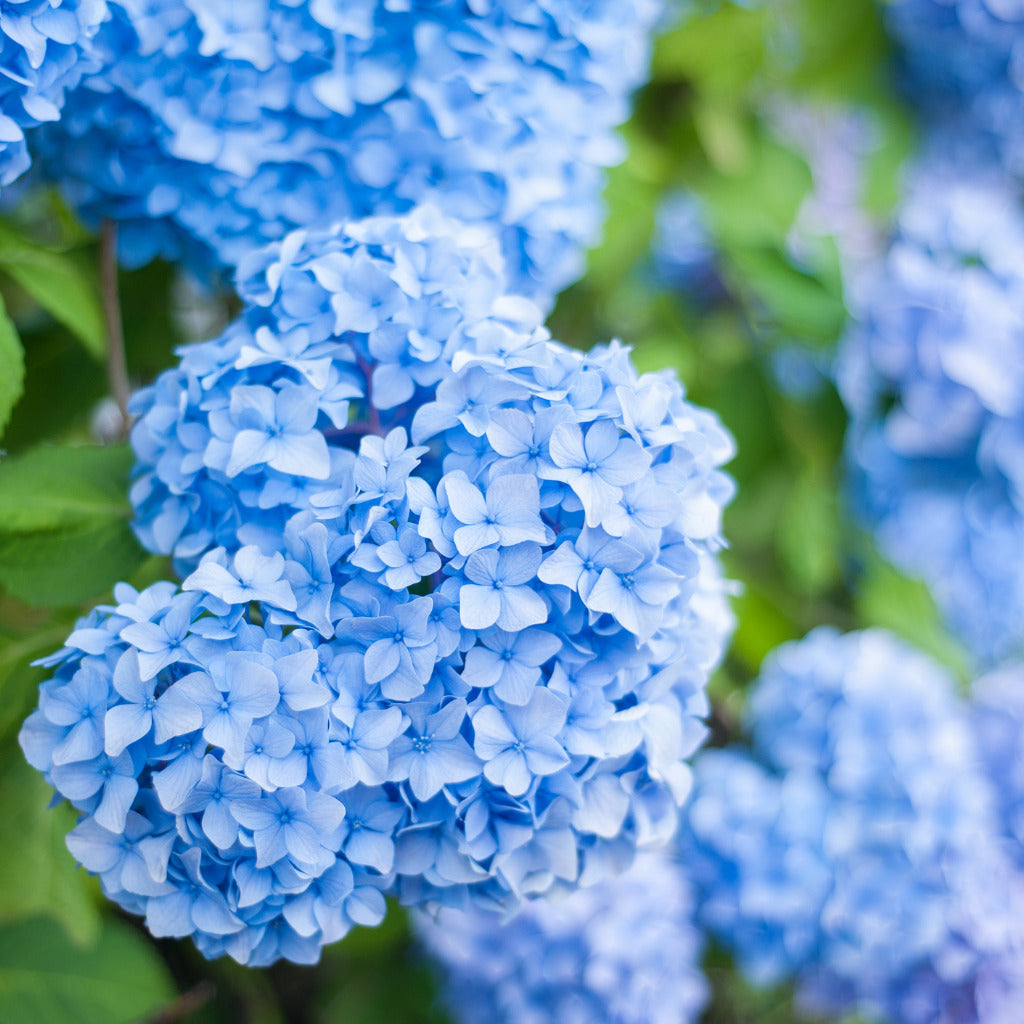
Among these different meanings associated with hydrangeas, one stands out when it comes to healing: grace. Grace refers to elegance, poise, and refinement, but it also has spiritual connotations of divine love, mercy, and forgiveness. White hydrangeas, in particular, are known to represent this quality. With their delicate and pure white blooms and their full round shape, they evoke a sense of wholeness and wellness, making them an ideal choice for conveying sentiments of healing and positivity.
In some cultures, white hydrangeas are believed to possess healing powers, both physically and emotionally. They are thought to bring balance and harmony to the mind, body, and spirit. This belief may stem from the fact that white is often associated with purity, innocence, and new beginnings. White hydrangeas can symbolize a fresh start and a clean slate, making them a meaningful gift for someone going through a difficult time or starting a new chapter in life.
In addition to their symbolism of healing and grace, white hydrangeas also have a calming effect. Their tranquil appearance can bring a sense of peace and tranquility to a room, making them a popular choice for home decor and meditation spaces. This calming quality can also aid in reducing stress and promoting relaxation, which are essential for healing and maintaining overall well-being.
Giving white hydrangeas as a gift is not only a thoughtful gesture, but it also carries a powerful message. They convey the idea of healing and grace, reminding the recipient that they are loved and supported. Whether it’s for a friend recovering from an illness, a family member going through a tough time, or even for yourself as a reminder of self-care, white hydrangeas are a perfect choice to spread healing vibes.
Hydrangeas hold deep symbolic meanings, including those of gratitude, grace, beauty, calmness, devotion, and understanding. Among these, white hydrangeas stand out as a powerful representation of healing and positivity. With their pure white blooms and full round shape, they evoke a sense of wholeness and wellness, making them a perfect choice for conveying sentiments of healing and grace. So next time you want to spread some healing vibes, consider giving a beautiful bouquet of white hydrangeas.
Conclusion
Flowers can provide uplifting sights, soothing scents, and powerful symbolic meaning. Throughout history, certain blooms have been tied to healing properties that can impart renewal and recovery. Sending flowers like roses, carnations, daisies, and hydrangeas promotes positive energy. Opt for visually vibrant and fragrant flowers in calming colors. Include a heartfelt note wishing improved health and happiness. With their beauty and grace, flowers remain a timeless and thoughtful gift to send healing vibes to those who are ill or injured.

We’re Emma Carole Paradis and Kimberly Carole, the owners and designers of Impeccable Nest, based in Bedford, New Hampshire. A mother-daughter team with a love of design. Originally from Manhattan Beach, California, now based in Bedford, New Hampshire, we bring a Southern California cool and New England tradition to our design. Not only do we work together…we also live together in a multi-generational home…and a home that they are known to design for others.
